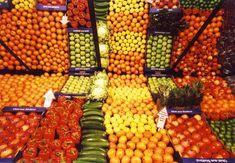
According to a new report by the US department of agriculture's economic research service, rising incomes, falling transportation costs, improved technology, and evolving international agreements have led to substantial growth in the volume and variety of fruits and vegetables traded globally.
Three regions (the European Union, the North American Free Trade Agreement area, and Asia) are the major destinations, as well as the major sources of supply, for this trade. All three regions depend on Southern Hemisphere countries for imports of juices and off-season fresh fruits, and on equatorial regions for bananas, the leading fresh fruit import.
Globalisation of the fruit and vegetable trade has made fresh produce accessible to consumers around the world, overcoming seasonality and smoothing price fluctuations.
High income-growth rates in developing countries portend higher rates of fruit and vegetable consumption and trade in the future.
In the meantime, developed countries will dominate global consumption and trade of fruits and vegetables, not only because of their high income levels but also because of consumers' increasing concerns about healthy eating, which tend to increase fruit and vegetable intake in their diets.



